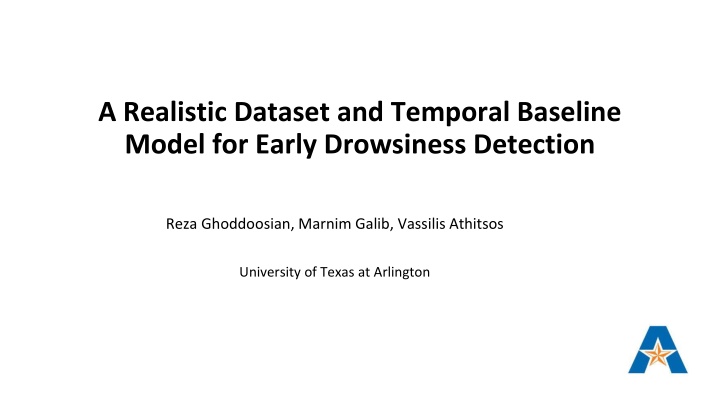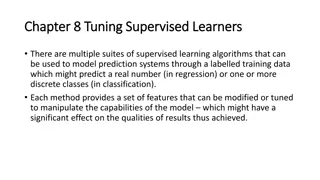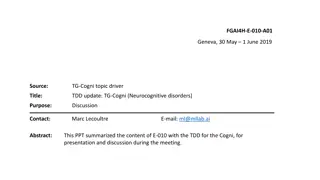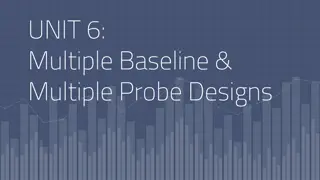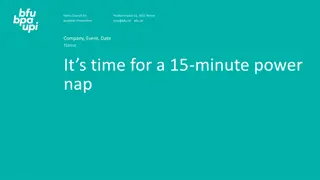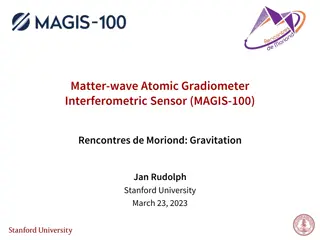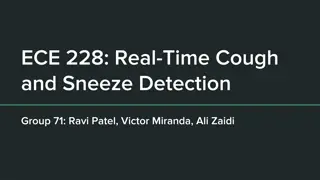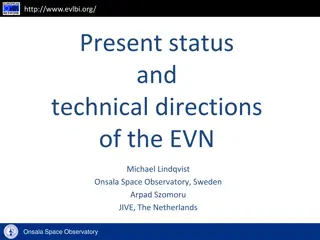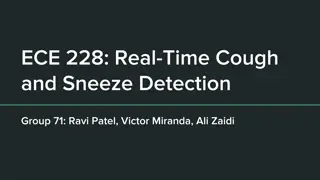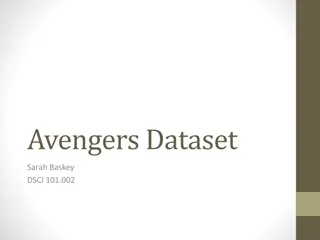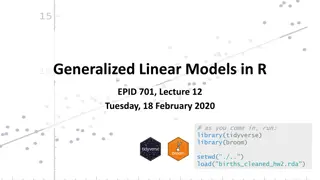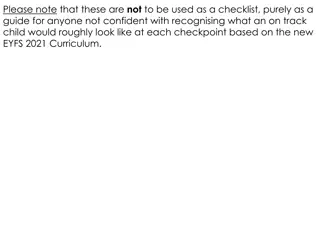Early Drowsiness Detection Dataset and Baseline Model
This study introduces a realistic dataset and temporal baseline model for early drowsiness detection, addressing the critical issue of drowsy driving that leads to numerous accidents and fatalities each year. By analyzing physiological measurements and human behavior, the research aims to improve detection methods and enhance driver safety. Various datasets and experiments are discussed, shedding light on the significance of detecting signs of drowsiness in real-time scenarios.
Download Presentation

Please find below an Image/Link to download the presentation.
The content on the website is provided AS IS for your information and personal use only. It may not be sold, licensed, or shared on other websites without obtaining consent from the author.If you encounter any issues during the download, it is possible that the publisher has removed the file from their server.
You are allowed to download the files provided on this website for personal or commercial use, subject to the condition that they are used lawfully. All files are the property of their respective owners.
The content on the website is provided AS IS for your information and personal use only. It may not be sold, licensed, or shared on other websites without obtaining consent from the author.
E N D
Presentation Transcript
A Realistic Dataset and Temporal Baseline Model for Early Drowsiness Detection Reza Ghoddoosian, Marnim Galib, Vassilis Athitsos University of Texas at Arlington
Introduction Dataset Method Experiments Motivation 100,000 crashes, estimated 1,550 deaths, 71,000 injuries, and $12.5 billion per year[1] 1 in 25 adult drivers fallen asleep while driving in the previous 30 days[2,3] The longer the drive, the less likely the driver can estimate their drowsiness[4] Negative impact of drowsiness on workers performance 1- Facts and Stats , May 2018. [Online]. Available: http:// drowsydriving.org/about/facts-and-stats/. [Accessed: 20- May- 2018]. 2- D. F. E. C. J. Wheaton AG, Shults RA. Drowsy driving and risk behaviors10 states and puerto rico, 2011-2012. MMWR Morb Mortal Wkly Rep., 63:557 562, 2014 3- P.-C. L. C. J. R. D. Wheaton AG, Chapman DP. Drowsy driving 19 states and the district of columbia, 2009-2010. MMWR Morb Mortal Wkly Rep., 63:1033, 2013. 4- E. A. Schmidt, W. E. Kincses, M. Scharuf, S. Haufe, R. Schubert, and G. Curio. Assessing drivers vigilance state during monotonous driving. 2007.
Introduction Dataset Method Experiments Related Work Human Performance Drowsiness Detection Physiological Measurements Human Behavior
Introduction Dataset Method Experiments Related Work
Introduction Dataset Method Experiments Related Work Are (early) drowsiness signs definitely known/predictable ? Yes Drowsiness can be acted No Drowsiness CAN NOT be acted We experiment how capable humans are in (early) drowsiness detection!!!
Introduction Dataset Method Experiments Related Work NTHU Dataset[1]: 36 subjects (9.5 hours) Acting drowsiness (yawning, slow blink, nodding, laughing) Emulating driving in controlled lab environment IR video DROZY Dataset [2]: 14 subjects with real drowsiness (3x14 videos) Controlled lab environment Imbalanced dataset EEG,EOG and NIR videos 1- C.H. Weng, Y.H. Lai, and S.H. Lai. Driver drowsiness detection via a hierarchical temporal deep belief network. Asian Conference on Computer Vision, 2016. 2-Q. Massoz, T. Langohr, C. Franc ois, and J. G. Verly. The ulg multimodality drowsiness database (called drozy) and examples of use. WACV, 2016
Introduction Dataset Method Experiments Related Work Focused on detecting extreme and acted drowsiness [1,2,4] Used high frame rate cameras and more intricate sensors [3] Not evaluated on large and public datasets 1- B. Reddy, Y.H. Kim, S. Yun, C. Seo, and J. Jang. Realtime driver drowsiness detection for embedded system using model compression of deep neural networks. CVPRW, 2017 2- P. Smith, M. Shah, and N. da Vitoria Lobo. Monitoring head/eye motion for driver alertness with one camera. In Pattern Recognition, 2000. Proceedings. 15th International Conference 3- F. Friedrichs and B. Yang. Camera-based drowsiness reference for driver state classification under real driving conditions. In Intelligent Vehicles Symposium (IV), 2010 4- S. Park, F. Pan, S. Kang, and C. D. Yoo. Driver drowsiness detection system based on feature representation learning using various deep networks. In Asian Conference on Computer Vision, 2016.
Introduction Dataset Method Experiments Dataset Baseline Method
Introduction Dataset Method Experiments UTA-Real Life Drowsiness Dataset (UTA- RLDD) 3 x 10 min Videos Alert x 60 Low Vigilant Crowdsourcing Drowsy KSS Table https://sites.google.com/view/utarldd/home
Introduction Dataset Method Experiments UTA-Real Life Drowsiness Dataset (UTA- RLDD) 30 hours of video (Largest Public DD) Extreme and slight drowsiness Real life environments Realistic drowsiness Different phone/web cameras (fps<=30) Age from 20 to 59 years old with a mean of 25 and standard deviation of 6 Ethnicities: 10 Caucasian, 5 non-white Hispanic, 30 Indo-Aryan and Dravidian, 8 Middle Eastern, and 7 East Asian
Introduction Dataset Method Experiments Drowsy3.MOV Add 3 short sample videos LowVigilant3.MOV Alert3.MOV
Introduction Dataset Method Experiments Dataset Baseline Method
Introduction Dataset Method Experiments Pipeline Blink Detection LSTM Input Video Regression Classification Normalization
Introduction Dataset Method Experiments Blink Detection Credit: Real-Time Eye Blink Detection using Facial Landmarks by Soukupov , Tereza and Cech, Jan
Introduction Dataset Method Experiments Blink Detection
Introduction Dataset Method Experiments Blink Features
Introduction Dataset Method Experiments Normalization Assuming the Alert status in the first X mins of driving/working. Compute the mean and std of each blink feature n during the first X mins for each person m. Normalize the blinks after min X using the computed mean and std This strategy alleviates the physiological difference in blinkining pattern across people, e.g, some blink faster even at rest time compared to others.
Introduction Dataset Method Experiments LSTM Many to One A real value from 0 to 10 LSTM Last T blinkins Each blink has 4 dimensions
Introduction Dataset Method Experiments Temporal Drowsiness Regression Labels (t): Alert=0, Low Vigilant=5, Drowsy=10
Introduction Dataset Method Experiments Results (5 fold cross validation) Baseline Human Judgment
May the result of this work lead to lives being saved Thanks
